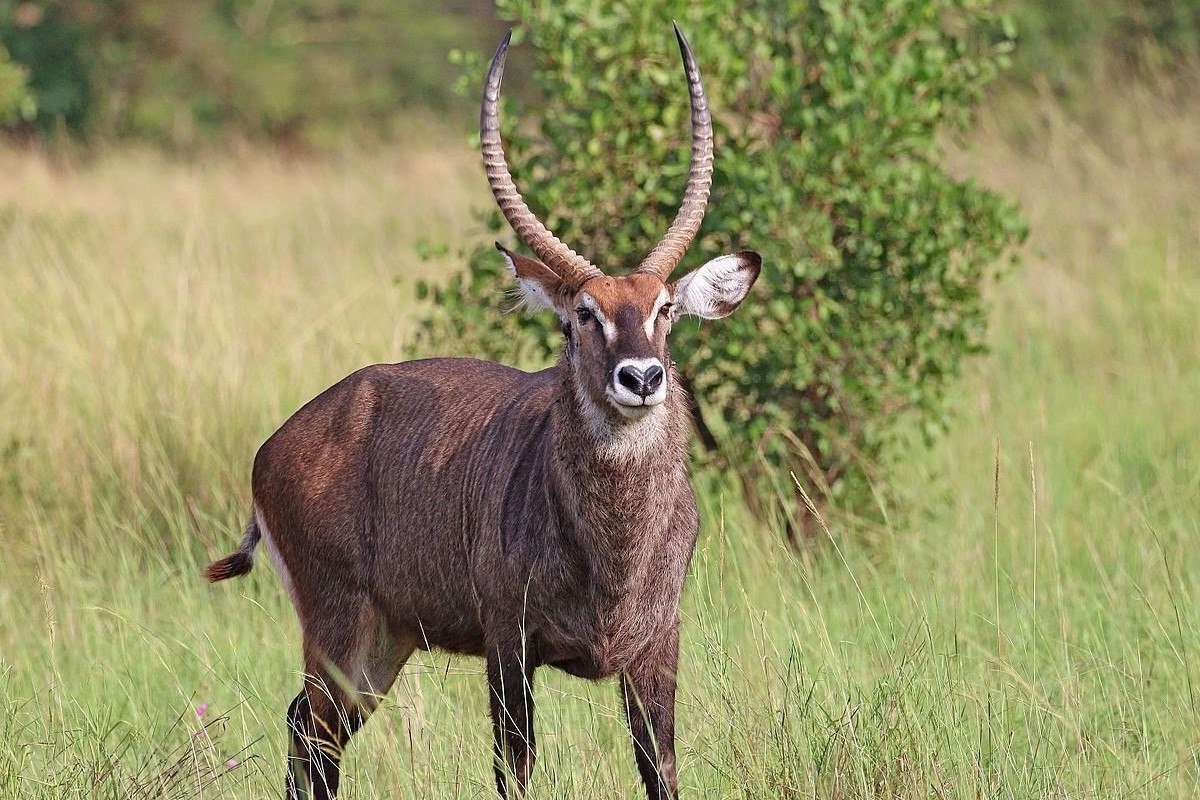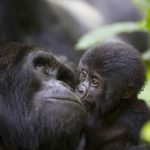Waterbucks in Uganda: Unique Features, Behavior, and Conservation
Waterbucks in Uganda | Overview. Uganda, often referred to as the “Pearl of Africa,” boasts a rich diversity of wildlife, including a unique and intriguing species known as the waterbuck (Kobus ellipsiprymnus defassa). Waterbucks are a species of antelope that thrive in wetland habitats and have adapted to a semi-aquatic lifestyle. In Uganda, these majestic creatures can be found in various national parks and game reserves, adding to the country’s allure as a prime destination for wildlife enthusiasts.
Physical Characteristics:
The waterbuck is easily distinguishable by its shaggy coat, which varies in color from grayish-brown to reddish-brown. One of the most notable features is the characteristic white ring encircling their rump, giving them their name. Both males and females possess long, forward-curving horns, with those of males being more robust and longer.
The shaggy coat of the waterbuck serves as protection against parasites, and their unique coloration helps them blend into their natural environment. These adaptations make them well-suited to the savannas, grasslands, and wetland areas that they inhabit. The name “waterbuck” is derived from the animal’s affinity for aquatic environments, and they are excellent swimmers, with the ability to traverse water bodies with ease.
Habitat and Distribution:
Waterbucks are predominantly found in sub-Saharan Africa, with a significant population thriving in Uganda. They are particularly well-adapted to a variety of habitats, including grasslands, savannas, and areas near water sources such as rivers and lakes. In Uganda, national parks like Murchison Falls National Park and Queen Elizabeth National Park provide ideal environments for waterbucks to thrive.
Their proximity to water is not only essential for hydration but also plays a crucial role in their anti-predator strategy. When threatened, waterbucks seek refuge in the water, as they are strong swimmers, and their aquatic escape is an effective defense mechanism against predators like lions and hyenas.
Behavior and Social Structure:
Waterbucks are known for their distinctive behavior, including territoriality and a hierarchical social structure. Adult males, easily recognizable by their impressive horns, establish territories to attract females. They mark their territory with secretions from glands located on their faces.
Females and their offspring form herds led by a dominant male. These herds provide protection against predators, and the hierarchical structure within the group helps maintain order and reduce conflicts. Waterbucks are primarily grazers, feeding on grasses, but they also consume leaves and aquatic vegetation.
Feeding Habits: – Waterbucks in Uganda | Overview
Waterbucks are herbivores with a varied diet consisting of grasses, shrubs, and aquatic vegetation. Their adaptation to both grazing and browsing allows them to exploit a wide range of available food sources. The proximity of water bodies provides a constant supply of fresh vegetation, contributing to the waterbuck’s overall health and vitality.
Lifespan: – Waterbucks in Uganda | Overview
The average lifespan of waterbucks in the wild is around 10 to 15 years. However, factors such as predation, habitat quality, and disease can influence their longevity. In captivity, waterbucks may live longer due to the absence of some of these natural threats.
Conservation Status and Threats:
While waterbucks are currently classified as a species of “Least Concern” by the International Union for Conservation of Nature (IUCN), localized threats and habitat loss could impact their populations. Human-wildlife conflict, poaching, and changes in land use are among the potential threats facing waterbucks in Uganda.
Conservation efforts, such as the establishment and maintenance of national parks, anti-poaching initiatives, and community education programs, play a vital role in safeguarding the waterbuck population; Sustainable tourism practices also contribute to the protection of their habitats and promote awareness about the importance of preserving these unique and charismatic antelopes.
Conclusion: – Waterbucks in Uganda | Overview
In Uganda, waterbucks contribute to the rich tapestry of biodiversity that makes the country a haven for wildlife enthusiasts. Their unique features, behavior, and the challenges they face highlight the importance of continued conservation efforts. By understanding and appreciating these magnificent creatures, we can work towards ensuring that future generations can witness the beauty of waterbucks in the wild, contributing to the preservation of Uganda’s natural heritage.








